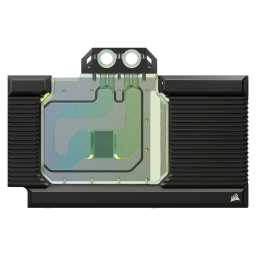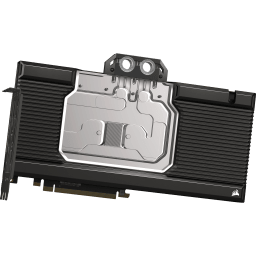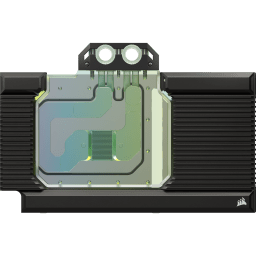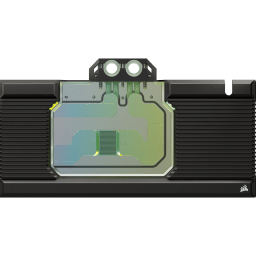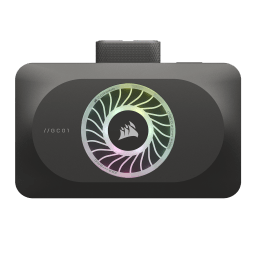UPDATE: The RTX 50-Series has debuted with a new version of DLSS. We'll be writing about that soon, for now, though, check out our 50-Series overview page.
The goal for the average gamer is to maximize the frames and visual quality of games with as little money as possible. And so when Nvidia started talking about a new feature that could improve image quality and even make new frames with a simple software switch, it started getting a lot of attention. A couple years later and we’re starting to see what it is really capable of, along with competitors attempting to do the same thing.
Nvidia’s DLSS and AMD’s FSR are the most prominent implementations of these new game rendering enhancement technologies. They both have methods of increasing resolution and frame rates, but their independent development makes them slightly different in performance and compatibility. Let’s take a closer look at where we’re at to compare Nvidia’s DLSS 3.7 and AMD’s FSR 3.1.
How do DLSS and FSR work?
Nvidia’s Deep Learning Super Sampling started off only being able improve resolution. The core idea behind “AI Upscaling” is that you give a computer a low-resolution image, tell it to guess what it would look like if it was a higher resolution, and compare it to a natively higher resolution to see how well it did. After the computer makes some tweaks to itself, it’ll repeat the process to try and get a better result. Eventually the computer will be able to do a pretty good job and can take everything it learned to apply to a new image.
DLSS takes this a step further by talking to the game, understanding the environment, how objects are moving, and even what the game looks like in the previous frame. By tapping into the game engine, the AI has more information on what the final image should look like and will produce a better result.
By training a complex deep learning algorithm on how a specific game looks and moves, Nvidia was able to create DLSS. At the end of it all we have a GPU running the game at a low resolution with higher frame rates and then using specialized hardware for upscaling. With a similar core concept, we also got frame generation which attempts to make entirely new frames instead of improving on the ones the GPU already makes, drastically raising the frame rates and playability of many games.
Switching over to the AMD side of things we have FSR which is short for FidelityFX Super Resolution. FSR is much closer to a traditional upscaler, taking the images produced by your GPU, running it through a complicated algorithm, and getting a higher resolution image at the end of it. Although the process seems much more straight forward compared to Nvidia’s deep learning approach, it has shown impressive results. The more general approach to upscaling without deep learning means that it uses much less compute power, doesn’t require special hardware, and is much more widely compatible.
Over the years, Nvidia and AMD have introduced more features under the “DLSS” and “FSR” name but we’re only going to focus on upscaling and frame generation for this article. We’re also not going to be comparing Nvidia’s Image Scaling or AMD’s Radeon Super Resolution, the lower quality but more broadly applicable versions of these technologies.
Compatibility
Since part of these technologies rely on reading into the game and understanding what it’s looking at, game developers have to add support for these technologies into their game. This means that neither of these technologies are a simple plug and play solution. Even the version and thus quality of the upscaling can vary depending on when the game is updated. Both DLSS and FSR have taken steps to help ease integration into Unity and Unreal Engine, two of the most popular game engines, so as time goes on we should be seeing these features more commonly. At the moment, DLSS can be found in more games thanks to a several year head start but FSR has significantly more games it could potentially be added to.
As mentioned before, Nvidia’s DLSS requires specialized hardware. Unsurprisingly, this hardware is limited to Nvidia’s latest and greatest products. DLSS requires at least a 20 series cards and frame generation requires a dedicated chip that is found only on 40 series graphics cards.
For AMD, FSR is officially supported not only on the AMD’s RX 500 series and newer but also Nvidia’s GTX 1070 and newer. Even older cards can unofficially use FSR but the quality and performance will obviously take a hit. For the final cherry on top, FSR can even run on some select AMD Ryzen processors with integrated Radeon graphics, meaning you can get some impressive performance without a dedicated GPU at all.
It is important to note that with years of added development, there are now multiple versions of both DLSS and FSR. Compatibility for both has been reduced as they have introduced more complicated features like frame generation. Newer versions are more powerful and produce better results, but older versions are more widely compatible and can still breathe new life into older cards.
Performance & Quality Comparison
Normally when benchmarking a PC we rely on measurable numbers like FPS, frame consistency, and input lag. This is because the one thing that was consistent was the quality of the output. Now with these new upscaling technologies, the final result is subject to different rendering processes, meaning different images. So, while we can still talk about frame rates, there is a visual component that is hard to quantify. Add in some extra variability from the differences in raw performance, the individual game’s preference for certain hardware, and the rapid development of both technologies and the winner can change at any time.
The best way to compare these technologies is always going to be with photo and videos, not through text. Be sure to do your research and browse the wide variety of community made comparison videos to go beyond the data to examine the quality and experience of these technologies.
When looking at the frame rates, both technologies can roughly boost the frame rate of most games by 1.5x to 2x depending on the quality setting. Throughout several games Nvidia pulls a slight edge with 10 or so frames extra. AMD is not far behind, still pushing respectable numbers but the close loss in multiple titles give the win to DLSS.
Looking at quality, FSR has some consistent issues. Issues with ghosting around moving objects, shimmering in small details and still images, and general detail in motion are things that have been greatly improved with FSR 3.1 but not completely eliminated. Nvidia’s higher power, more computationally intensive approach seems to have paid off as the quality is generally regarded as better.
In general, DLSS is ahead of the game in terms of both frame rates and quality. With Nvidia releasing their technology roughly 3 years earlier than AMD, this is to be expected but the race is surprisingly close. The important thing is that both technologies help make more games playable for more people.
While neither solution is perfect, these new frame generation and upscaling techniques push many games to be playable for many people while enabling a smoother, high resolution image for others. It is exciting to see how these features continue to develop and allow for more games to be played even as hardware ages.
To get the most out DLSS and FSR, make sure your GPU is running optimally. Check out the GPU blocks available on our webstore to get your system ready for water cooling for the best performance possible.
المنتجات في المقالة
